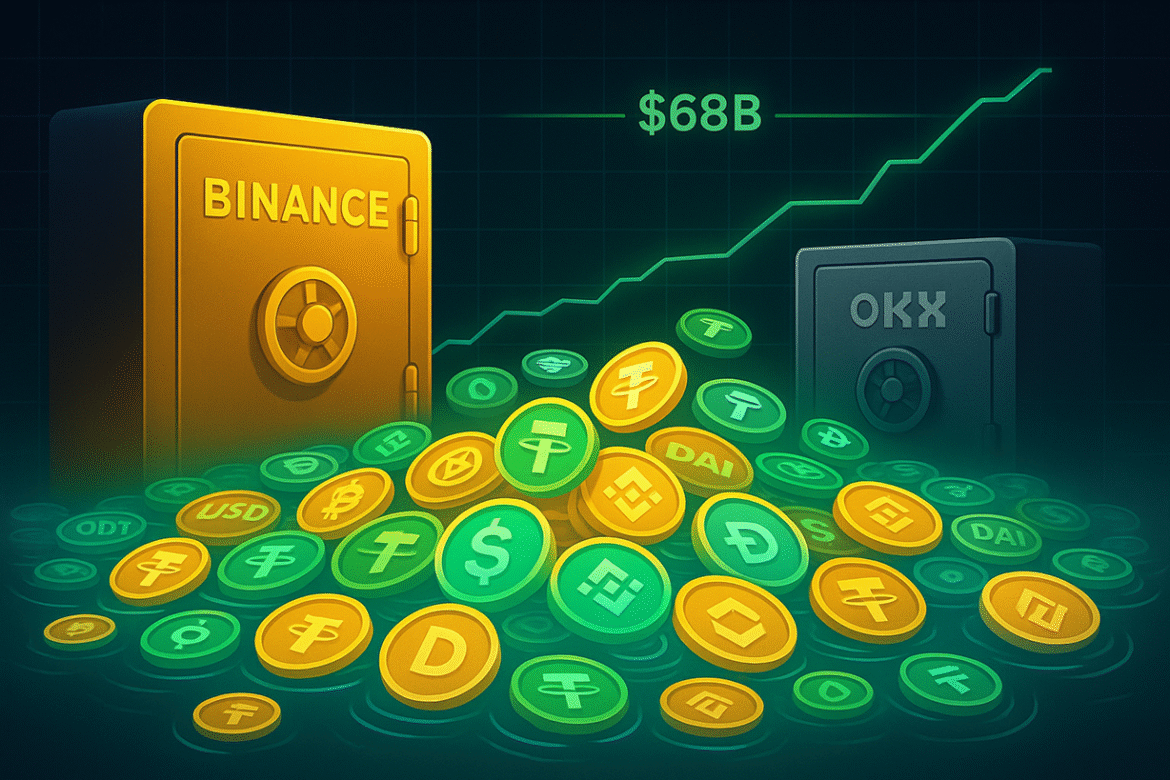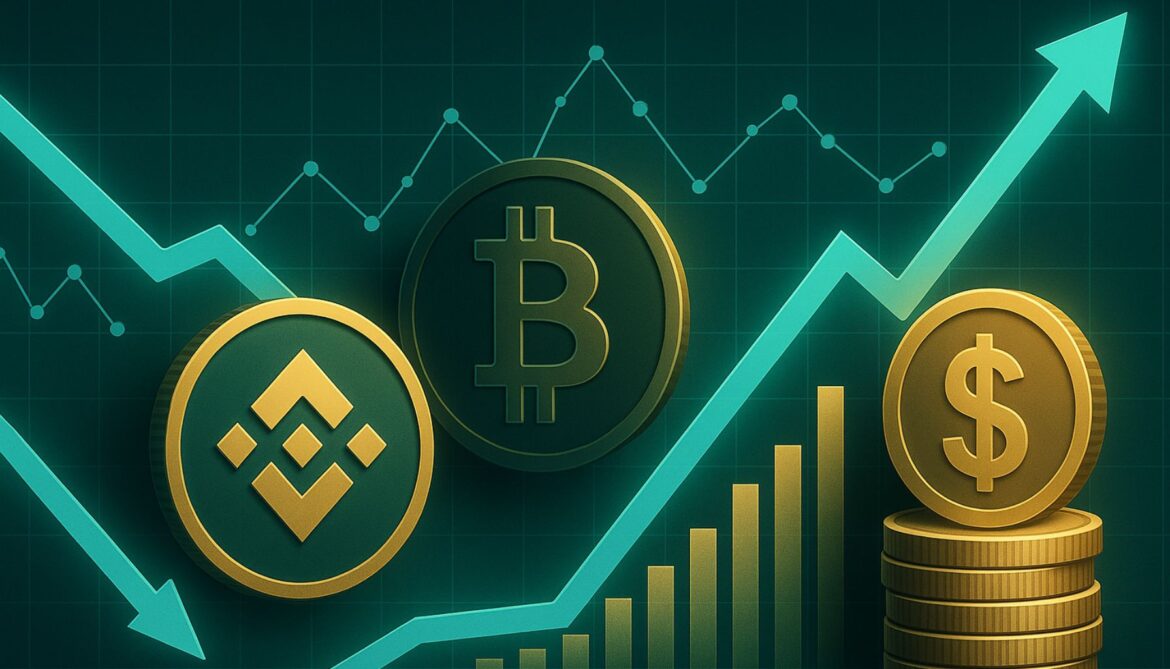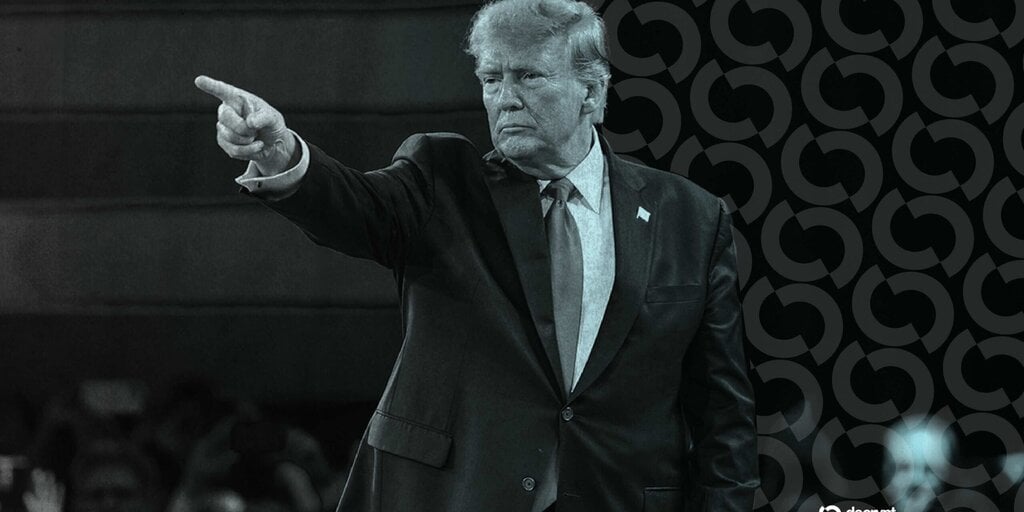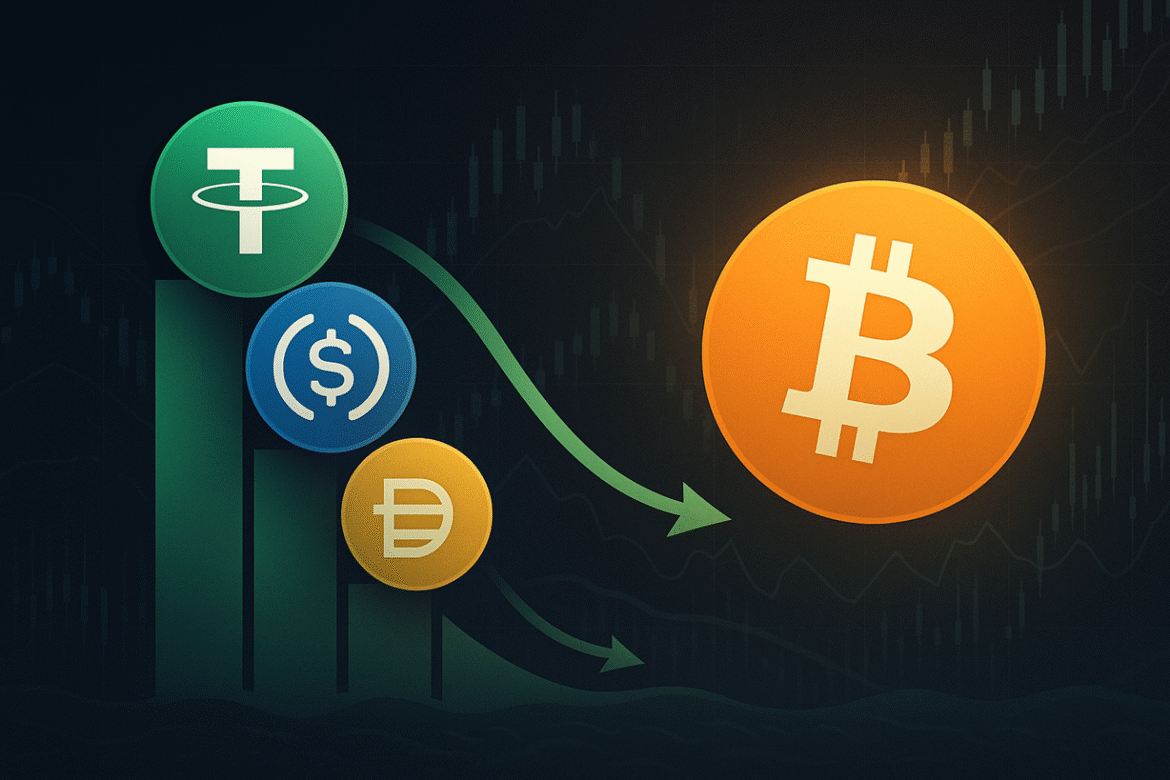Trusted Editorial content, reviewed by leading industry experts and seasoned editors. Ad Disclosure
The combined Exchange Reserve of the stablecoins has recently set a new all-time high (ATH), driven mainly by growth on Binance.
Stablecoin Exchange Reserve Has Witnessed A Rise Recently
In a new post on X, on-chain analytics firm CryptoQuant has talked about the latest trend in the combined Exchange Reserve of the Ethereum and Tron-based stablecoins.
The “Exchange Reserve” here refers to an indicator that keeps track of the total amount of a given asset or group of assets that’s sitting in wallets connected to centralized exchanges.
Generally, one of the main reasons why investors deposit their coins to these platforms is for selling-related purposes, so the supply present on them may be looked at as a measure of the “available sell supply” of the cryptocurrency.
When Bitcoin or another volatile coin observes an increase in this supply, it’s naturally a bearish sign for its price. The same, however, isn’t true in the case of stablecoins, as they are, by definition, stable around the $1 mark.
Instead, inflows of these fiat-tied tokens may actually be a bullish sign for the market. Investors usually park their capital in the form of stables when they temporarily want to avoid volatile markets. Once they have decided it’s time to switch back, they deposit to exchanges and swap into BTC or whatever desired asset. Because of this role of stables, they are sometimes considered as the buy-side liquidity of the sector.
Now, here is a chart that shows how the Exchange Reserve has changed for the different ETH and TRON-based stablecoins over the last few years:
The combined value of the metric has climbed up in recent days | Source: CryptoQuant on X
As displayed in the above graph, the stablecoins have seen their Exchange Reserve surge recently, implying there has been demand for depositing these tokens into exchange custody. The latest growth has mainly been driven by the two largest stables, USDC and USDT.
Following these recent net inflows, the indicator has been able to set a new record of around $68 billion. As for how the various platforms compare in their share of this liquidity, the below chart shared by CryptoQuant breaks it down.
The stablecoin Exchange Reserve separately for the major platforms | Source: CryptoQuant on X
From the graph, it’s visible that Binance holds the largest share of the indicator at $44.2 billion (67%). The next largest platform is OKX, having a reserve of just $9 billion.
These two exchanges have been the main platforms behind the recent growth in stablecoin liquidity.
The trend in the 30-day change of the metric for various platforms in 2025 so far | Source: CryptoQuant on X
Over the past month, Binance and OKX have seen stablecoin net inflows of $2.2 billion and $800 million, respectively.
Bitcoin Price
Bitcoin has failed another attempt at recovery as its price has slumped back down to the $110,700 mark.
Looks like the price of the coin has been moving sideways over the last few days | Source: BTCUSDT on TradingView
Featured image from Dall-E, CryptoQuant.com, chart from TradingView.com
Editorial Process for bitcoinist is centered on delivering thoroughly researched, accurate, and unbiased content. We uphold strict sourcing standards, and each page undergoes diligent review by our team of top technology experts and seasoned editors. This process ensures the integrity, relevance, and value of our content for our readers.










